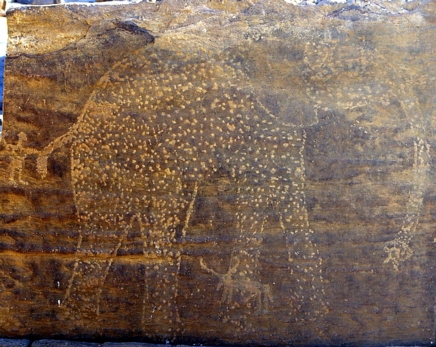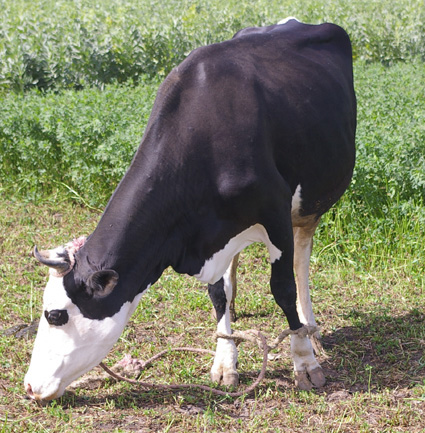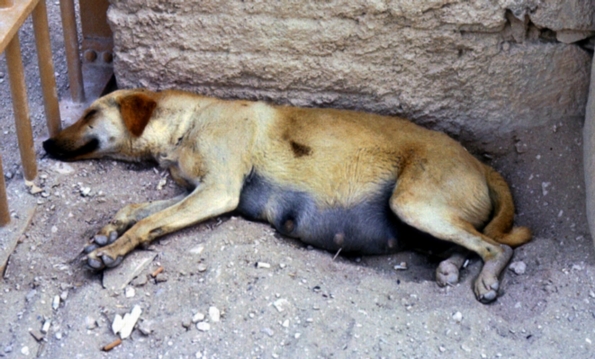Sacred Signs : 1
Sacred Signs : 1
Prehistoric Rock Carvings

1.1 These gazelles were carved on a rock face in the area of Lower Nubia flooded by Lake Nasser. The carvings have been brought to the site of New Kalabsha. They most likely date to the Prehistoric period (between 5,000-4,000 BCE), from a time when the lower desert terraces along the Nile valley were much wetter and more like savannah terrain. The bend at the end of the horns of the gazelles enables them to be precisely identified as a particular type of gazelle. A basic concept of hieroglyphs is that they also enable objects and creatures to be precisely identified. In the context of the rock carvings, some have suggested that the depictions of the animals means that hunters will have goo fortune in the hunt, or that the place where they were carved is a good place to find the gazelles or that the carving records the sighting and perhaps capture of an especially fine herd of gazelles. There is a message behind the carvings, but we have not quite deciphered it.

1.2 Also at New Kalabsha there is this rock carving of an elephant whose tail is being held by a small figure. What is the story behind this image? Perhaps it is the story of the man who went hunting, saw an elephant and grabbed its tail. He may have hung on to it for a while before letting go and then watched the elephant go away. His great deed of bravado may have made his reputation and was recorded for his fellow hunters to see on the rock-face nearest to their settlement. The size of the elephant may have been exaggerated in order to boost the achievement of the ‘elephant catcher’.
Alternatively, the scene could represent the story of the boy who caught an elephant by the tail and lived to tell the tale.
Cultural Background of Egyptian Hieroglyphs
Egyptian hieroglyphs represent objects and creatures common to the Egyptian world. For people who are not familiar with those objects, the recognition of the signs can be problematic.

1.3 Tj sign: this sign represents a tethering or hobbling rope. A piece of rope would have a loop at both ends which were tied around the front or back legs of an animal such as a donkey, cow or sheep. The animal would not be able to roam freely, with its movement effectively curtailed, so that it could be left to graze relatively safely. In practice, the animal may also be tied to a stake or pole in the ground to prevent it from roaming too far.

1.4 Here is a cow hobbled by such a rope. From the ‘real’ image one can see how much the hieroglyph has been designed and stylised. This happened in the initial stages of the development of hieroglyphs and demonstrates a real visual understanding of how to communicate ideas simply and cleanly.

1.5 h-underlined: this sign represents the belly and teats of a female animal, perhaps a sheep, goat, dog or cat.

1.6 This dog outside the tomb of Tutankhamun in 1983 models the hieroglyph in reality. Again the stylisation of the sign demonstrates the real skill of the first scribes.
